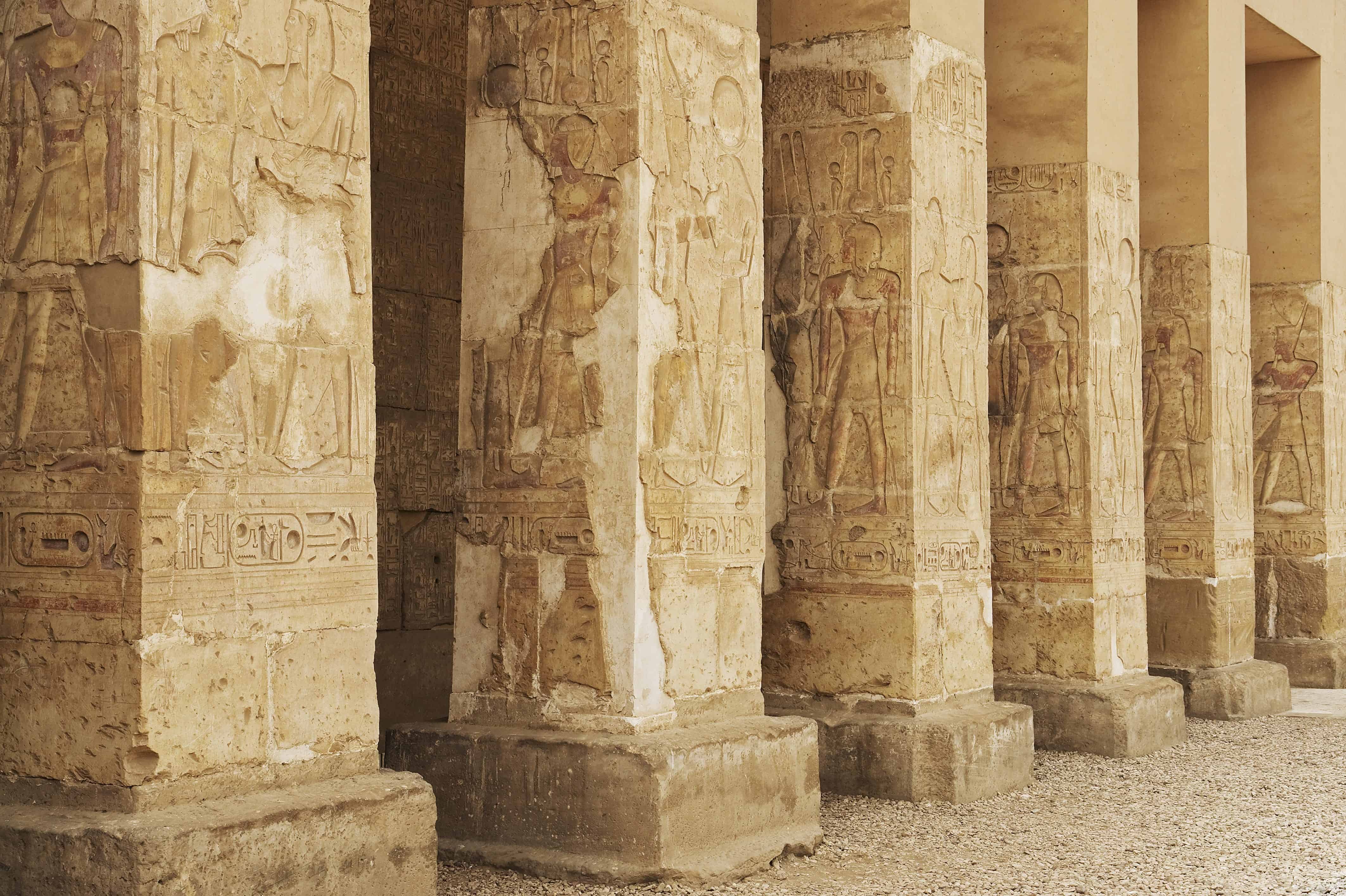Abydos
Revered in ancient times as the burial place and cult center of Osiris, the king of the underworld, Abydos (ancient Abedju) was an important pilgrimage destination and necropolis from the Predynastic era into Christian times (ca. 4000 BC – AD 641). The area of Umm el-Qa’ab (Arabic for “Mother of pots”), located far out in the low desert, contains the tombs of early Predynastic chieftains and the burials of many of the kings of the Early Dynastic period (one of which was identified during the Middle Kingdom as the tomb of Osiris). Closer to the floodplain are mud-brick enclosures serving the royal funerary cults of the 1st and 2nd Dynasties, of which the best-preserved is the Shunet el-Zebib (Dynasty 2, reign of Khasekhemwy).
Also at Abydos are the remains of other royal and elite tombs, ancient towns, cenotaphs (symbolic tombs), and temples. In the area known as Kom es-Sultan (North Abydos) are the remains of an early town and a temple of Osiris-Khentyamentiu. During the Middle Kingdom, a yearly procession celebrating the resurrection of the god Osiris after his murder at the hands of his brother Seth led from this temple to the “tomb of Osiris” at Umm el-Qa’ab. During this era, cenotaphs were built near the processional way by individuals wishing to participate eternally in the Osirian cult.
The best-preserved temples at Abydos, located at the very edge of the floodplain in Middle Abydos, were built in the New Kingdom by Seti I and his son, Ramesses II. Behind the temple of Seti I is the Osireion, thought to be a symbolic tomb for Osiris. These temples are the only part of the site open to the general public.
Major monuments in South Abydos include a small pyramid of the 3rd Dynasty; a mortuary complex for the 12th Dynasty king Senwosret III (perhaps his actual burial place); and a pyramid and temple built by the first king of the New Kingdom, Ahmose. In addition, there is a small temple thought to have been dedicated to the cult of Ahmose’s principal consort, Ahmose-Nefertari, and a small chapel dedicated to his grandmother, Queen Tetisheri.





